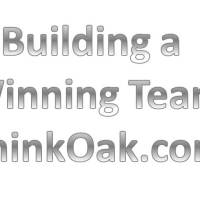Stop the Rot – Managing Poor Performance ~ Part 1
December 24, 2012 3 Comments
 Earlier this year the Roffey Park Institute published their excellent annual report – The Management Agenda. A staggering 46% of UK managers reported that poor performance is not tackled at all well in their organisation, rising to 60% in Public Sector managers.
Earlier this year the Roffey Park Institute published their excellent annual report – The Management Agenda. A staggering 46% of UK managers reported that poor performance is not tackled at all well in their organisation, rising to 60% in Public Sector managers.
So what do I mean by Poor Performance? Simply put, poor performance is the failure of an individual to do his or her job, or to do it at an acceptable level. As a manager, you have a responsibility to manage the performance of your people. If you have witnessed poor performance (including inappropriate behaviour), or you are in receipt of a complaint or grievance, you must address this with the people concerned.
Impacts of Poor Performance
In my experience, the impacts of under-performing individuals run much wider than the results of their own performance, or lack of them. Poor performance observed by a supervisor or manager is normally only the ‘tip of the iceberg’ of the issue and is only observed after a period of under performance already being noticed and talked about by members of the wider team.
If these behaviours or lack of performance goes unchecked then the minimal implication for the manager who allows this to continue, is a loss of respect from the team he or she manages. Under-performance in key roles in your department could have a serious impact on you meeting your own department or business objectives, which may have wider personal or business consequences. If you are committed to performing at a high level, and if you expect high performance from everyone, then you as the manager must address poor performers and quickly.
By failing to address poor performance, you are sending a clear message to other team members that they need not meet their performance expectations and they should not expect any consequence for their unacceptable behaviour. Poor performance normally gets worse over time – rarely does it correct itself without action on the part of the manager or supervisor. Taking action against one individual does not lower morale amongst other team members. In fact, the opposite is often true. Often taking action leads to a more productive work environment.
Causes of Poor Performance
I firmly believe that no-one comes to work with a desire to fail. Although at times it may appear that an employee tries to perform poorly, most people actually want to do a good, or at the very least, an adequate, job. So why is it that people sometimes do fail at work? Poor performance can normally be attributed to one or more of the following:
- Lack of clarity of the Why, the What and the How of their role
- Lack of feedback and action from their previous or current management
- Lack of skill, knowledge, or motivation
- Inability to manage perception or pressure
- Failure to prioritise
- Conflict of personalities or styles
- Over-promotion, where the person is actually out of his or her depth
- Lack of resources, support, training or cooperation from others
- Personal issues manifesting themselves at work
Given the cost of recruiting and training new people, helping under-achievers move from poor to acceptable or better performance is almost always worthwhile.
Your Responsibilities as a Manager
Before moving into tackling the poor performance of your poor performer, you need to ask yourself some key personal questions:
1. Have I set out my performance expectations clearly? – If the person concerned doesn’t understand what is expected, it will be very hard, if not impossible, for them to meet those expectations. Providing clear expectations doesn’t necessarily require you to lay out precisely written, detailed instructions on every performance component. Generally, the question you should ask yourself is: “Would a reasonable person understand what was expected?”
2. Have I been having regular reviews with the poor performer and been giving them feedback? – Such feedback, both positive and negative, whether given in regularly scheduled meetings or in unscheduled discussions, is crucial to ensuring that expectations are understood. Frequent feedback lessens the likelihood that an employee will be surprised if it becomes necessary to take formal steps to resolve poor performance.
3. Have you provided the individual with the tools and training to do their job effectively? – What support have I / could I be giving to help raise performance going forward?
4. Is poor performance a new issue? – If the person in question has always performed adequately in the past, what has changed for them for their performance to dip? Is it a one-off mistake or has there started to become a pattern of events?
If you have answered these questions honestly and you answered ‘No’ to any of them, I would suggest that the poor performance starts with you. It’s never too late to start however!
In part 2, I’ll take you through a 7-step process to guide you through improving people’s performance.
As always, if you have any comments or feedback, I’d love to hear from you.






















